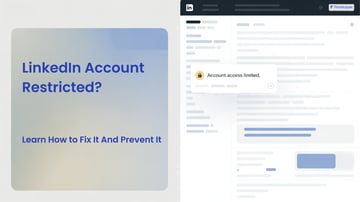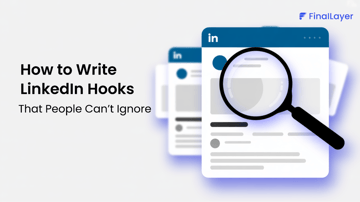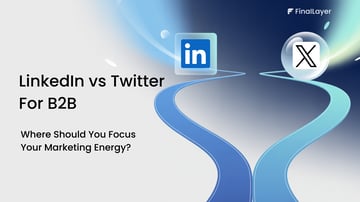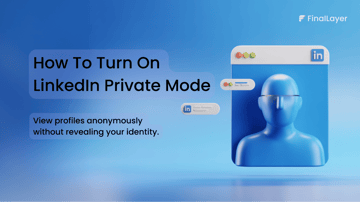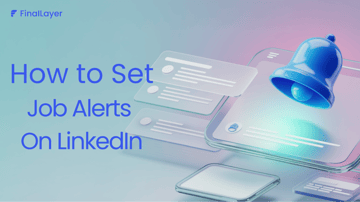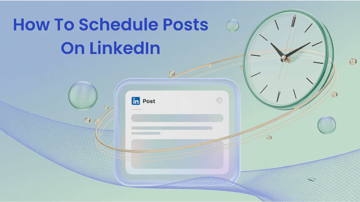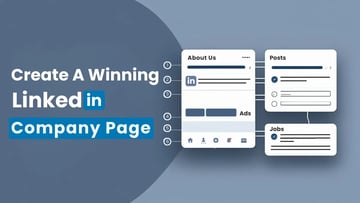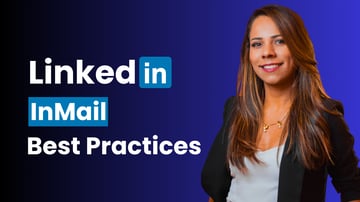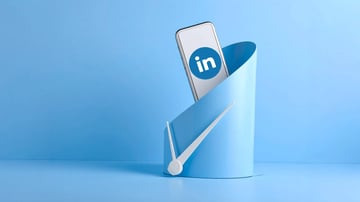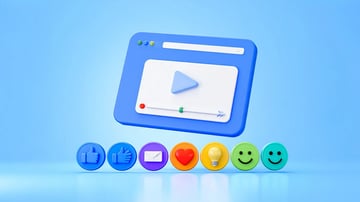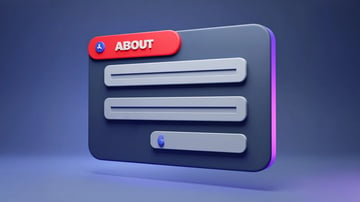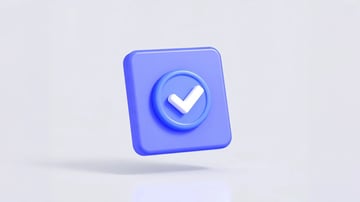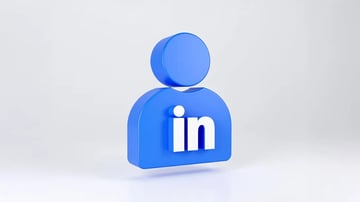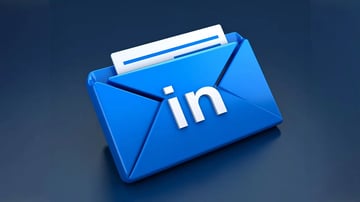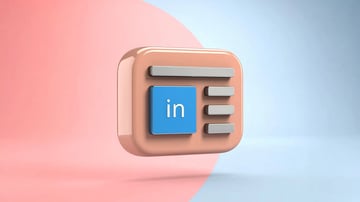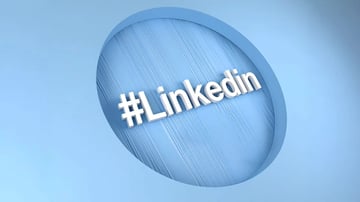Hey there! Welcome back to our LinkedIn profile optimization series. Today, I'm walking you through everything you need to know about adding promotions on LinkedIn. If you've recently moved up in your company or taken on new responsibilities, showcasing this achievement properly can significantly boost your professional visibility and open doors to new opportunities.
Why updating your promotions matters
Before we dive into the step-by-step process, let's talk about why keeping your promotion history current on LinkedIn is so important:
- It signals career progression to recruiters and potential employers.
- It keeps your network informed about your professional growth.
- It improves your searchability for relevant positions.
- It helps maintain an accurate professional timeline.
Step-by-step guide to adding a promotion on LinkedIn
Method 1: Adding a new position
1. Log in to your LinkedIn account and navigate to your profile page.
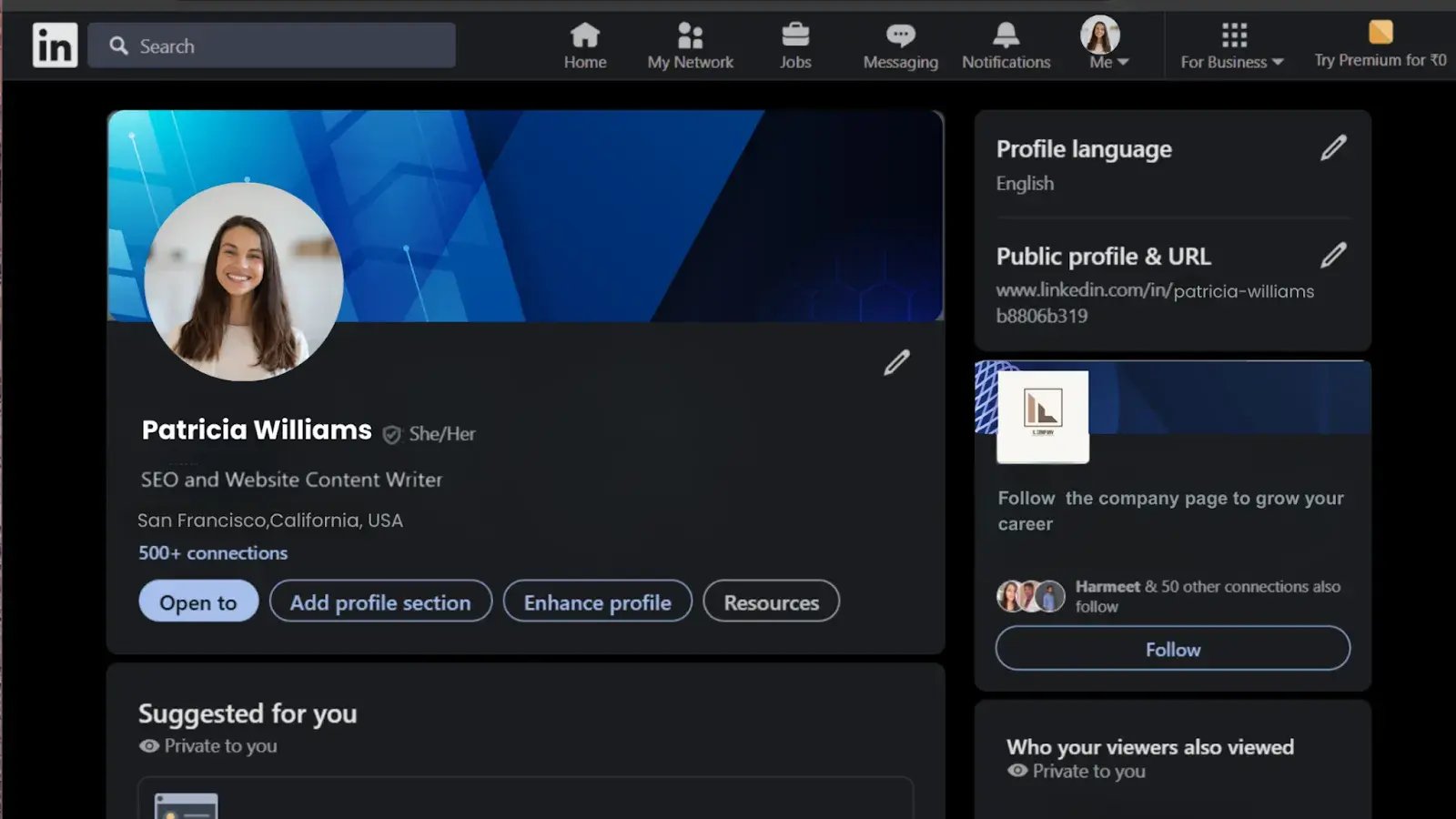
2. Click the "+" button in the Experience section.
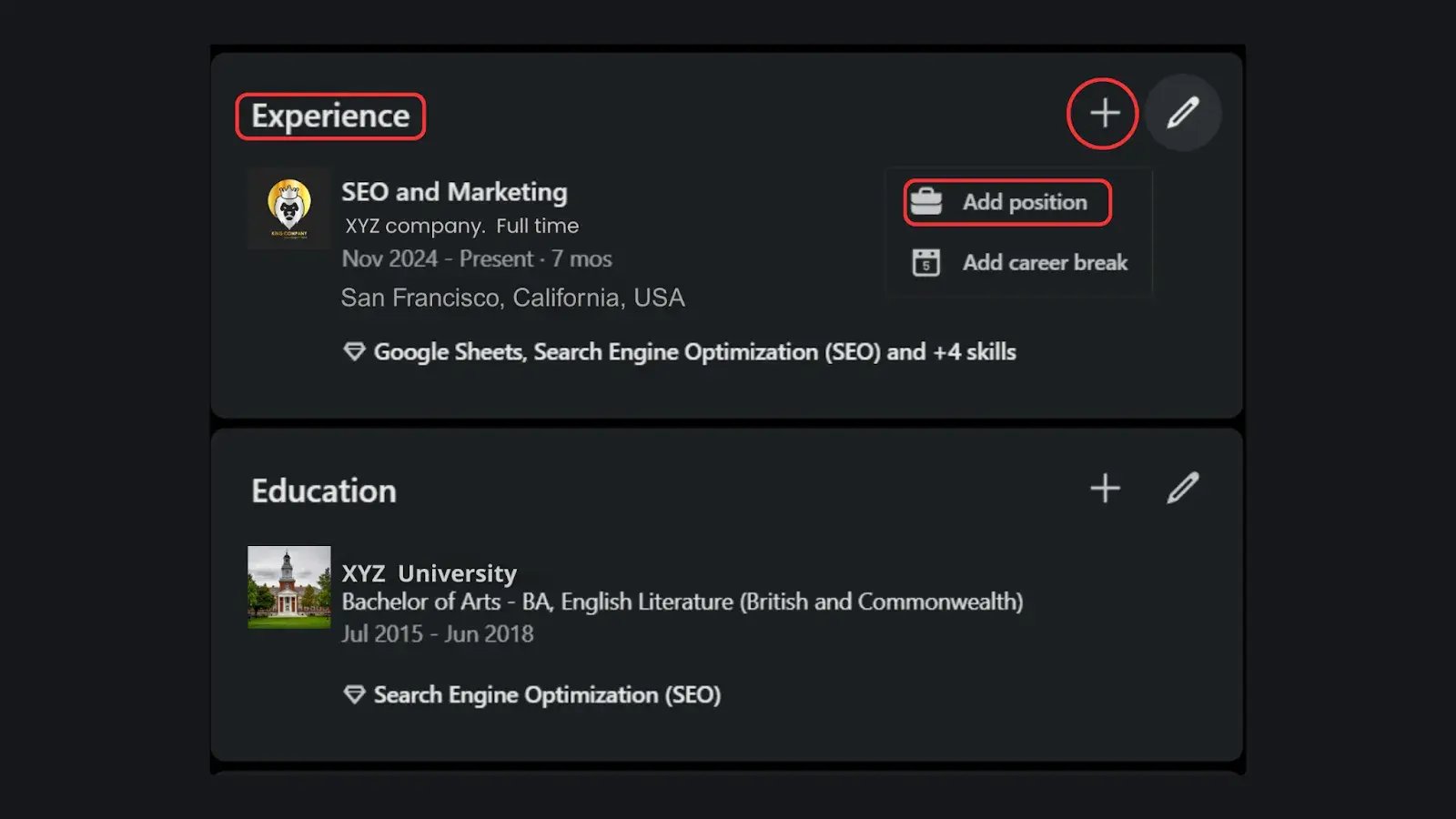
3. Enter your new job details, including title, company, location, start date, and description of new responsibilities.
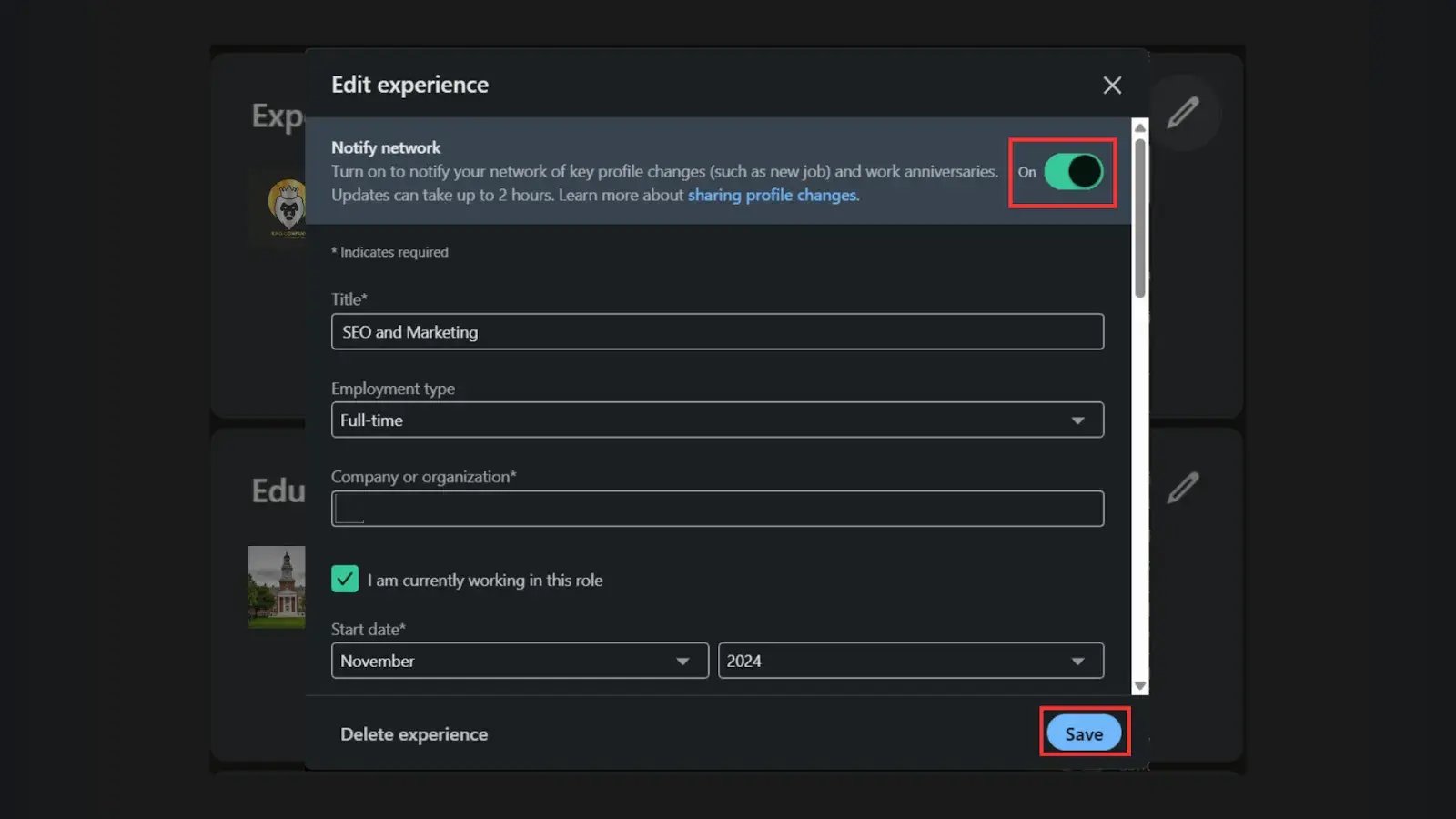
4. Click "Save" to add your promotion.
Method 2: Updating an existing position
If you've been promoted but remain in essentially the same role with expanded responsibilities:
1. Go to your profile and find the Experience section. Locate your current position and click the pencil icon to edit.
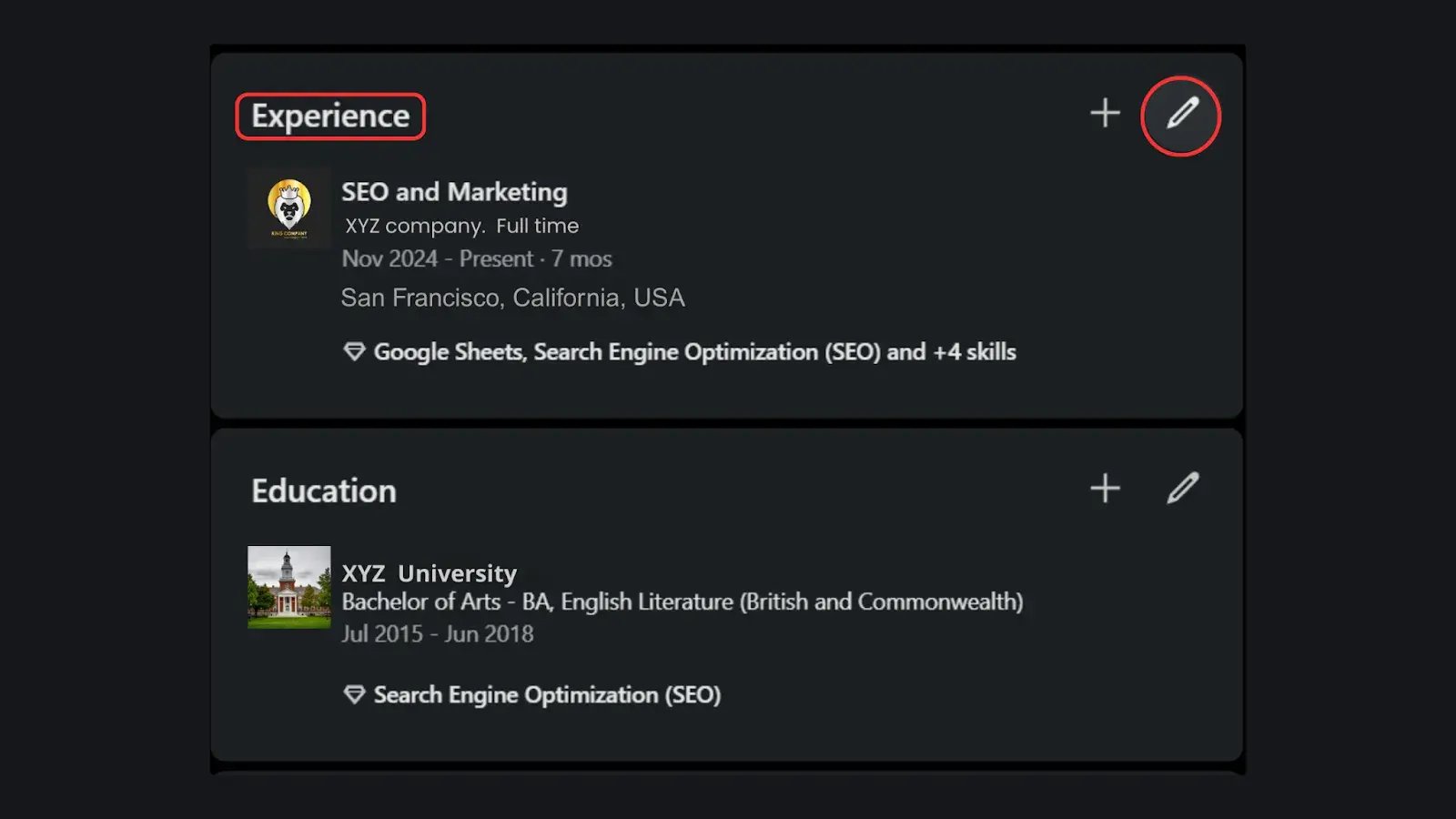
3. Update your job title to reflect your promotion. Revise the description to include new responsibilities.

5. Click "Save" when finished
Crafting an effective promotion update
When I updated my profile after my promotion from content writer to content manager last year, I made sure to use my exact new title—"Senior Content Marketing Manager"—rather than a generalized version.
This immediately communicated my level of responsibility to anyone viewing my profile and aligned perfectly with what recruiters in my industry were searching for.
After landing my promotion, I completely rewrote my role description to spotlight how I now oversee our quarterly content calendar and manage a team of three writers.
You can choose to quantifying achievements with concrete numbers, you can make it instantly clear why you deserve that upward move and attract attention from several industry leaders.
In my experience updating profiles for various roles, I've found strategic keyword placement makes all the difference. When I added terms like "content strategy development" and "editorial team leadership" to my promotion description, I started receiving more relevant connection requests from fellow content leaders who found me through LinkedIn's search feature.
So the idea is that the thoughtfulness you demonstrate in how you share your achievement often reveals more about your leadership potential than the promotion itself.
Announcing your promotion to your network
The day I shared my promotion news, I crafted a heartfelt update that struck the perfect balance between professional and personal. I wrote about my journey with the company and expressed sincere gratitude for the opportunities I'd been given, which resonated with my network far more than a simple "I got promoted!" announcement would have.
Making sure to tag our company page was a game-changer for visibility—not only did my immediate connections see the update, but it also appeared in our company's activity feed, putting me on the radar of leadership and colleagues I hadn't yet connected with personally.
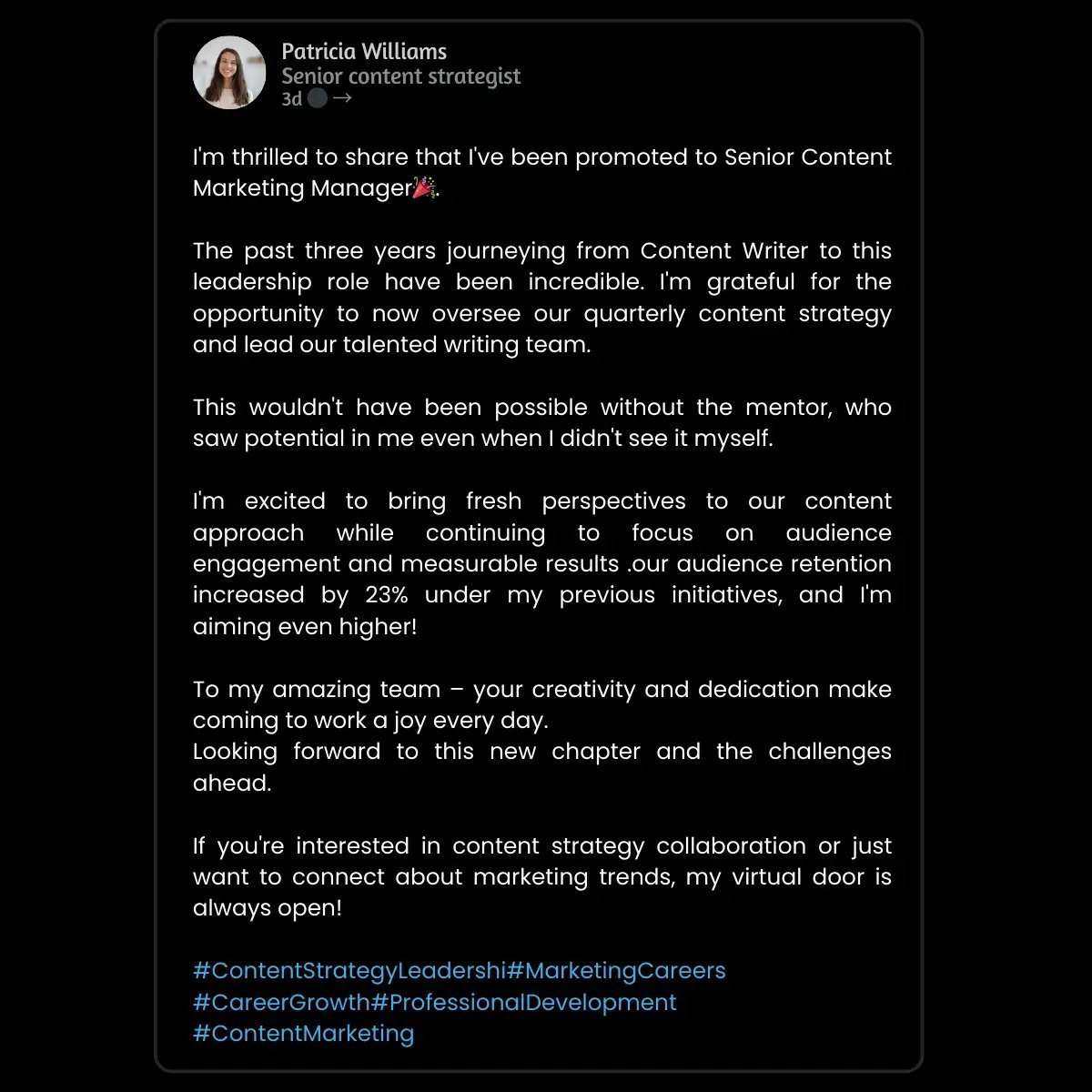
I'll never forget how meaningful it was when I specifically thanked my mentor in my promotion announcement—not only did she appreciate the recognition, but several senior professionals in her network saw the mention and reached out to congratulate me, expanding my circle in ways I hadn't anticipated.
What you might notice from these experiences is that promotion announcements are strategic relationship-building opportunities that work on multiple levels.
By approaching your announcement intentionally rather than treating it as a routine update, you can change a simple career milestone into a powerful networking tool and position yourself as someone who values professional growth.
Common mistakes to avoid when adding promotions
The excitement of sharing good news sometimes causes us to overlook important nuances that can affect how our professional narrative is perceived. Based on both personal experience and patterns observed across hundreds of client profiles, here are the critical pitfalls you'll want to sidestep:
1. Don't exaggerate your new responsibilities
Inflating your position can damage your credibility when contacts familiar with your company structure notice the discrepancy.
2. Avoid negative comments about previous roles or colleagues
Even subtle digs like "finally moving up after being overlooked" can reflect poorly on your professionalism and follow you to future opportunities.
3. Don't forget to update your headline
Many people update their experience section but leave their headline showing the previous role, creating confusion for profile visitors and limiting your searchability.
4. Don't create multiple entries for the same company
Unless there was a significant break, creating separate entries for each role at the same company makes your profile look fragmented and can give the impression of job-hopping.
5. Avoid rushing the update before it's official
Wait until your promotion is formally announced internally before updating LinkedIn to avoid workplace awkwardness or appearing presumptuous.
When and how to ask for endorsements after a promotion
After receiving my promotion last quarter, I approached endorsements with a strategic mindset rather than casting a wide net.
I identified five key connections who had directly witnessed my work on projects relevant to my new role, including my former supervisor and two cross-departmental collaborators who could speak to my leadership skills.
Instead of sending generic requests, I crafted personalized messages mentioning specific projects we'd worked on together and explaining how their endorsement of particular skills would help in my new position.
The quality of endorsements I received improved when I specifically mentioned the skills most relevant to my new position, like "team leadership" and "content strategy," rather than leaving it open-ended.
So, the key is endorsements that truly moved the needle for your career, should be quality connections where both parties understood the professional context behind the skill being validated.
This deliberate approach might take more time initially, but the authentic professional narrative it creates continues paying dividends long after the promotion announcement fades from your network's feed.
Wrapping Up
Adding a promotion on LinkedIn is an opportunity to refresh your professional narrative and expand your network. By following these steps and best practices, you'll not only reflect your career progression but also position yourself for future opportunities.
As always, I'd love to hear about your experiences with LinkedIn promotions. See you agian when we'll dive into how to leverage LinkedIn recommendations to supercharge your professional credibility!

